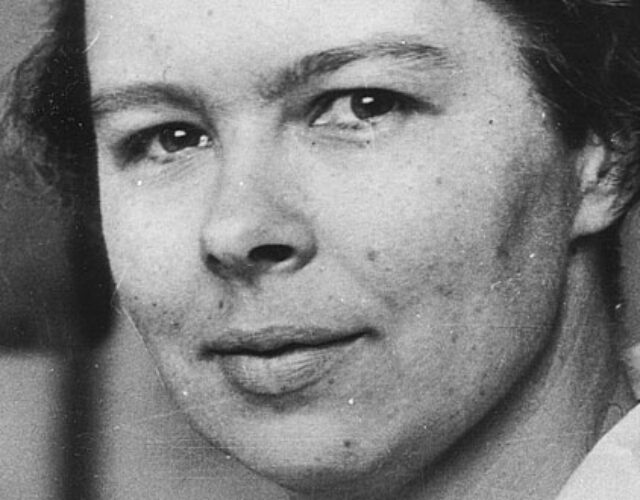Katharine Burr Blodgett was a brilliant, uncompromising chemist. Her literally invisible contributions to modern technology have appeared in windshields, movie cameras, and computer screens.
Many of her inventions brought clarity to the world, but Blodgett herself was born under a shadow. Her father, a well-known patent lawyer at General Electric (GE), was murdered by a burglar in the family’s home in Schenectady, New York, just weeks before Blodgett’s birth on January 10, 1898.
Blodgett was a talented student who earned a scholarship to Bryn Mawr College at age 15. During her senior year GE’s Irving Langmuir gave her a tour of the company’s research laboratories. Langmuir, a physical chemist, had been a colleague of Blodgett’s father and may have felt a responsibility to mentor the budding scientist. He encouraged her to continue her studies and then apply for a job at GE. Blodgett earned her master’s degree in physics from the University of Chicago in 1918 and by the end of that year was working alongside Langmuir. She was the first female scientist hired by GE at a time when many young men were still fighting in Europe.
Langmuir had been working primarily on surface chemistry when Blodgett joined his laboratory. His research focused on how substances stick to each other at the molecular level, and he had developed a method of creating thin films on the surface of water that were only one molecule thick. (Imagine placing a drop of oil onto the surface of a pond; the oil will spread out evenly across the water until the force between the oil molecules prevents the oil from spreading any further.) Langmuir and Blodgett extended this approach to various lipids, polymers, and proteins. Blodgett went on to find practical uses for Langmuir’s gossamer films, applications that contributed to Langmuir winning the Nobel Prize in Chemistry in 1932.
Blodgett took Langmuir’s research a step further, devising a method of adding layers to the thin films by dipping a metal plate into water covered by a layer of oil. Dipping the plate multiple times allowed her to stack oil layers onto the plate. Blodgett was soon able to control the exact thickness—to the molecule—of her films. She invented “invisible” glass with this technique, adding layers of film to both sides of a sheet of glass until the visible light reflected by the layers canceled that reflected by the glass. Gone with the Wind was the first major color film projected through a lens and coating based on Blodgett’s work, and its crystal-clear cinematography floored audiences on its release in 1939. Color films continued to impress the public as nonreflective lenses were used for projectors and cameras, energizing the postwar movie industry.
World War II found further uses for Blodgett’s glass, which appeared in airplane spy cameras and submarine periscopes. But she contributed more than nonreflective glass to the war effort. Some of her earlier research on the properties of charcoal led to more effective gas masks and smokescreens. She also invented a technique for de-icing airplane wings, allowing pilots to fly in conditions that before had been too dangerous to brave.
Blodgett achieved some degree of celebrity during her life, appearing in articles in popular magazines, such as Life and Time. The 1983 edition of the journal Solid Thin Films was dedicated to her. Such articles alternated between highlighting her accomplishments as a scientist and the uniqueness of her success as a woman. Despite the attention she received, Blodgett kept her private life private and left behind few personal papers. Never married, she lived out her retirement in a house with other single women.
The best of Blodgett’s inventions were invisible, but the influence they’ve had on our society is clear. Today, nonreflective glass, based on Blodgett’s discovery, is used in computer screens, eyeglasses, windshields, and most everything that requires a perfectly transparent surface. Scientists are still studying Blodgett’s films in hopes of finding new uses for this technology in microchips and sensors.




